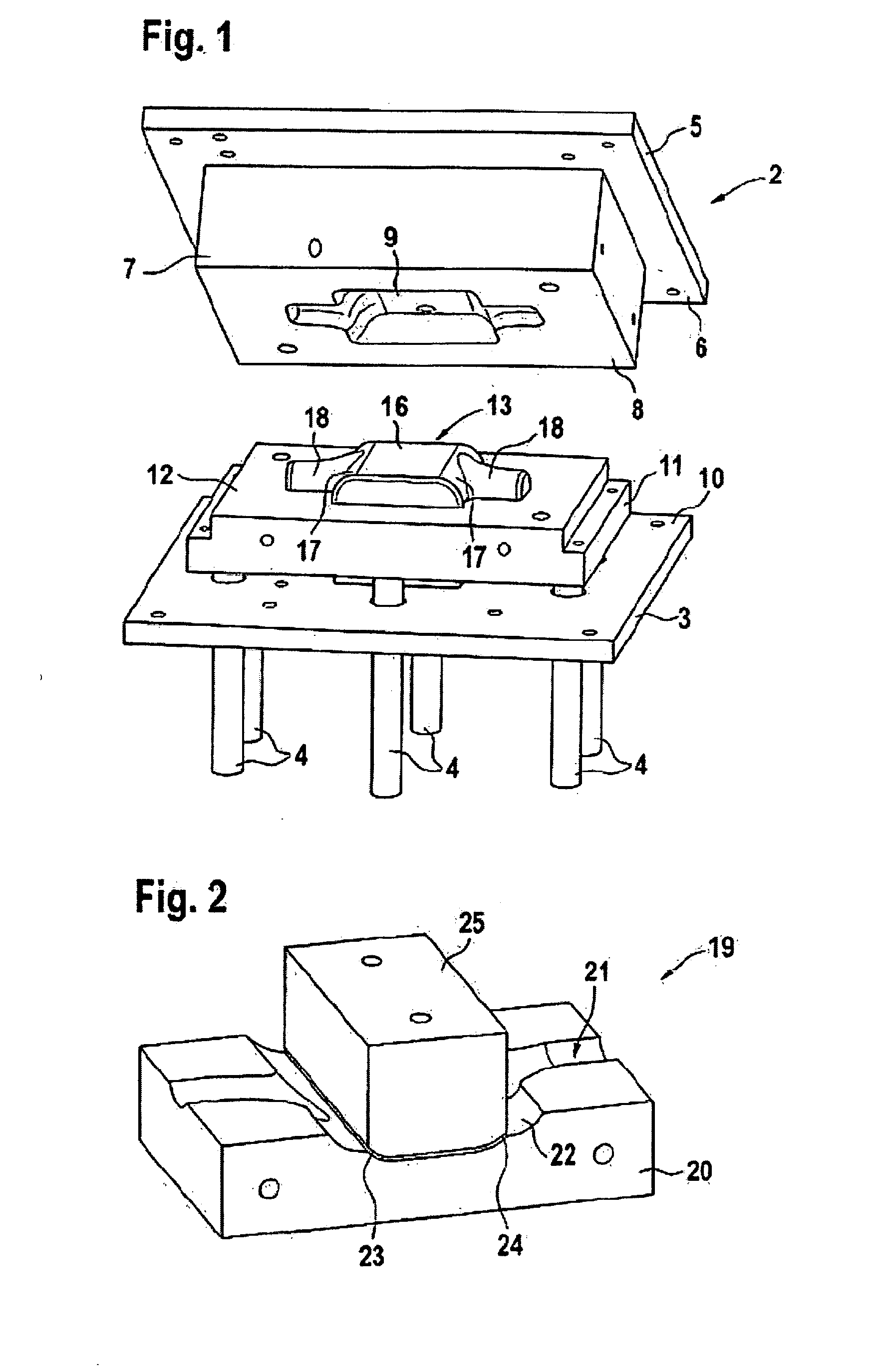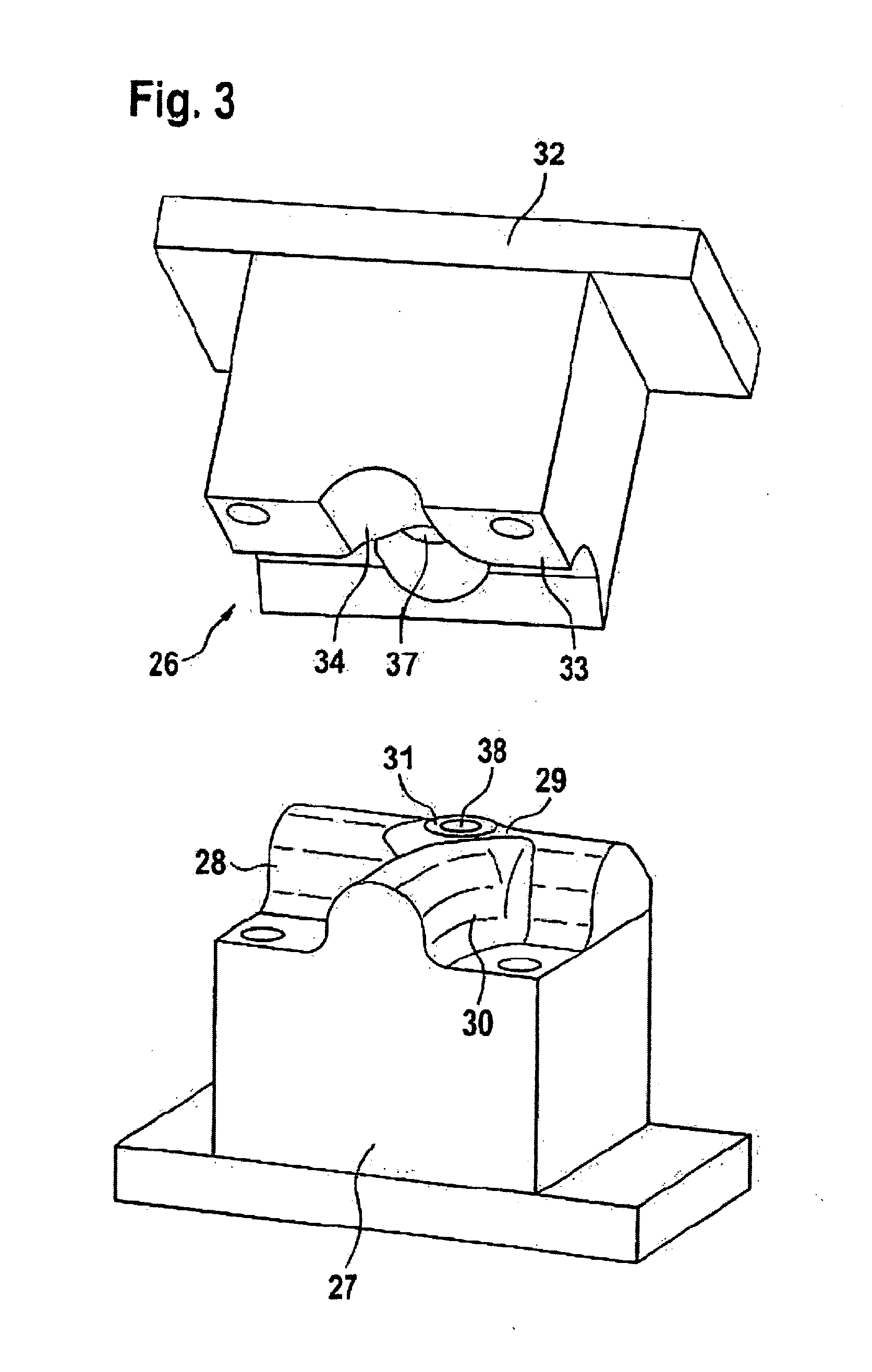Method and device for production of a hollow section
a hollow section and production method technology, applied in the direction of manufacturing tools, machines/engines, transportation and packaging, etc., can solve the problems of restricted joining possibilities of round-bent tube parts to one or more components, and achieve the effect of improving the jointing capability of the hollow section to other components in a simple fashion
- Summary
- Abstract
- Description
- Claims
- Application Information
AI Technical Summary
Benefits of technology
Problems solved by technology
Method used
Image
Examples
Embodiment Construction
[0024] Parts of an apparatus for the production of a hollow section 1 (FIG. 8) are shown in FIGS. 1 to 7, which is formed in a first working step from a flat sheet or a coiled sheet to an unwound pre-shape of the hollow section 1 by deep drawing with a deep-drawing device 2 (FIG. 1). The deep-drawing device 2 consists essentially of a press table 3, which is mounted on several columns 4, and a press head 5 which can be driven hydraulically or pneumatically to make lifting movements. An upper die 7 having a cavity 9 on its bottom 8 whose contour corresponds to the unwound pre-shape of hollow section 1 is arranged on the bottom 6 of the press head. On the top 10 of press table 3 a lower die 11 is fastened whose top 12 has the counter shape 13 to cavity 9. According to the finished pre-shape of hollow section 1, which is formed as a tube piece 14 with a by-pass connector 15 extending radially from it, the counter shape 13 protruding from the top 12 of lower die 11 has an elongated flat...
PUM
| Property | Measurement | Unit |
|---|---|---|
| pre-shape | aaaaa | aaaaa |
| shape | aaaaa | aaaaa |
| durable | aaaaa | aaaaa |
Abstract
Description
Claims
Application Information
 Login to View More
Login to View More - R&D
- Intellectual Property
- Life Sciences
- Materials
- Tech Scout
- Unparalleled Data Quality
- Higher Quality Content
- 60% Fewer Hallucinations
Browse by: Latest US Patents, China's latest patents, Technical Efficacy Thesaurus, Application Domain, Technology Topic, Popular Technical Reports.
© 2025 PatSnap. All rights reserved.Legal|Privacy policy|Modern Slavery Act Transparency Statement|Sitemap|About US| Contact US: help@patsnap.com



